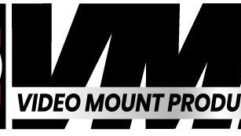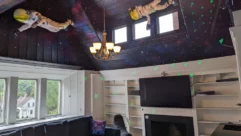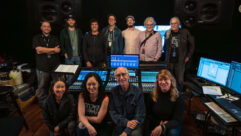

21st Century TV and You
When InfoComm 08 was ready to kick off in sizzling hot Las Vegas, the 2008 National Association of Broadcasters show was barely in columnist Pete Putman’s rearview mirror. So he jotted down his thoughts.
As you read this, InfoComm 08 is ready to kick off in sizzling hot Las Vegas. But as I write this column, the 2008 National Association of Broadcasters show, also in Las Vegas, is barely in my rearview mirror. In the past, I’d recap NAB. But thanks to Internet bloggers, most NAB news is old hat now. Instead, I’ll focus on tech trends I saw at NAB that should also be in evidenceat InfoComm and beyond. These trends will have an impact on the pro AV industry, one way or the other. Most will have an even bigger impact on consumer electronics, but as you know, that tail wags the dog these days.STANDING OUT IN THE MPEG CROWDVIDEO ON THE GO
Back in the day, NAB was a hardware show. Companies like Sony, Ampex, Panasonic, and Ikegami showed off their fancy new cameras, VTRs, switchers, and graphics generators to the assembled throngs, hoping to walk away with a fat check from NBC or ESPN or an international network such as the BBC.
The show has evolved into a technology showcase, giving equal weight to hardware and software solutions. The fact that video can be delivered over so many different pipes has brought not only direct-broadcast satellite and cable platforms on to the NAB stage, but also Internet Protocol TV (IPTV), which generated a lot of buzz at the show.
I started out scanning the booths of prominent manufacturers to check out digital video encoders primarily for terrestrial (ATSC) and IPTV delivery and found that basically everyone had at least one MPEG codec “solution” out for inspection. Harris, Thomson, Tandberg, JVC, Toshiba, IBM, and Motorola were just some of the big names in MPEG— and IPTV was the star of the show.
IPTV, a way to deliver video, audio, and data packets (plus clock bits) over private and public networks using standard Internet protocols, is fast catching on in Europe, but is off to a much slower start in the U.S., with only Verizon and AT&T in contention (and Verizon’s system isn’t even true IPTV).
There are dozens of ways an IPTV infrastructure can be designed, but they all need one thing: bandwidth. If service providers are to convince digital cable subscribers to make the switch, the system must offer the “triple play” of Voice-over-IP telephony, high-speed Internet, and digital television—including HDTV and video-on-demand—at a competitive price. That usually means private, not public, networks, preferably using fiber-optic backbones.
Of course, fiber backbones need to be overbuilt in cities and suburbs, traveling along the same utility poles as cable TV, twisted pair, and DSL connections.
NAB had IPTV “solutions” galore, ranging from simple encoders to full-fledged content servers and asset management solutions. One clear trend: the preference for MPEG-4 encoding, which apparently is twice as efficient as MPEG-2 (and the latter has been standardized for 15 years). I didn’t see a single IPTV platform using anything other than MPEG-4 encoding. I even spotted several MPEG-2 to MPEG-4 transcoders.
Because IPTV is still in its infancy, it can afford to adopt whatever codec it wants. So can satellite broadcasters, as their set-top boxes are proprietary. Cable MSOs aren’t as flexible, as not all their customers use set-tops, and of course terrestrial DTV broadcasts must remain in the MPEG-2 domain for now, as none of the integrated DTVs out there support MPEG-4 decoding.
Fujitsu conducted an outstanding demo of MPEG-4 during the CBS Engineering Breakfast. The company’s IP-9500 encoder was performing real-time AVC (H.264) encoding of a 1920x1080i broadcast signal at a constant data rate of 9 Mb/s with minimal blocking artifacts and mosquito noise—half the rate used for ATSC broadcasts.
Will you eventually confront an IPTV installation? Bet on it. And while you’re at it, better start thinking about wiring your new installations and some of your retrofits with optical fiber. Single-mode optical fiber is now the same price as Cat-5 wiring, and fiber crimping quick-connects with 0.02 dB insertion loss are widely available.
The fact that Extron, Kramer, and Communications Specialties all had two or more fiber transmitter/receiver combos and interfaces at NAB 2008 is proof that fiber solutions are ready for our market, if we’re smart enough to use them. The broadcasting world moved to fiber and Cat-5 a long time ago to complement high-speed digital coaxial interfaces, so optical fiber is old hatto broadcast integrators.
In our industry, we seem to prefer unshielded twisted pair (UTP) interfaces, which are nice for moving HD-resolution display signals several hundred feet at a time. In contrast, single-mode optical fiber can carry HD-SDI (1.458 Gb/s) streams over a mile and a half with only 3 dB of attenuation. That represents a significant improvement, and one that offers plenty of expansioncapacity.
One trend I can’t give any clear predictions about is mobile delivery of video programming. Suffice it to say, there was just as much interest in mobile DTV as there was in IPTV, with numerous demos by content providers (Verizon, AT&T) and hardware/software providers (LG/Harris, Qualcomm, Samsung).
As I did last year, I took to the streets of Las Vegas to see the LG/Harris MPH mobile video demo, using variable-rate and quarter-rate encoding and the vestigial sideband modulation (VSB) system to bring video to LG cell phones and small car displays. The system worked well enough that minor dropouts were only seen while traveling 50 miles per hour on Desert Inn Road under the convention center.
These results are similar to what I saw last year from Samsung’s A-VSB mobile DTV system. Both systems compete with Qualcomm’s MediaFLO content delivery platform, operating on UHF channel 55 nationwide, and the DVB-H standard that is coming into use in Europe.
You’re probably wondering, “How the heck will mobile TV affect my business?” The answer is, in two ways. First, directly, if your customers want to distribute AV content throughout a building or campus to mobile players. And second, indirectly, if they want to take mobile video content from a handheld device and play it through that new AV system you just dedicated.
Are you ready to make either or both connections? Do you understand the basics of WiMax? MediaFLO? DVB-H? It might be a good time to start boning up on each of these systems, as well as MPH and A-VSB. While you’re at it, better take a refresher course in ATSC (terrestrial) DTV, as some clients may want to include ATSC channels on private TV networks, along with locally generated DTV content.
Boy, this industry gets more complicated with each passing year.
Contributing editor Pete Putman is president of ROAM Consulting in Doylestown, Pa. He can be reached at [email protected].









